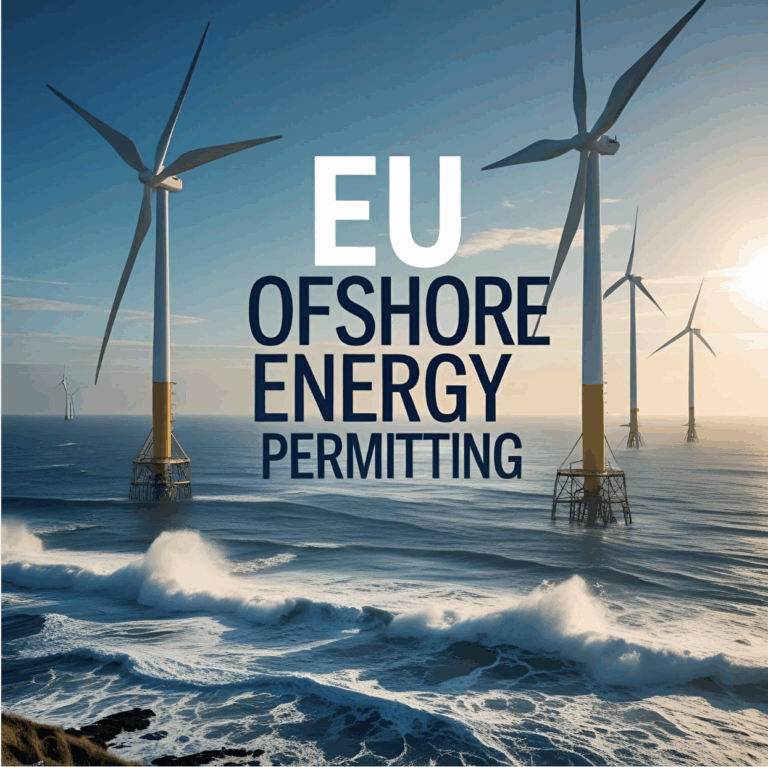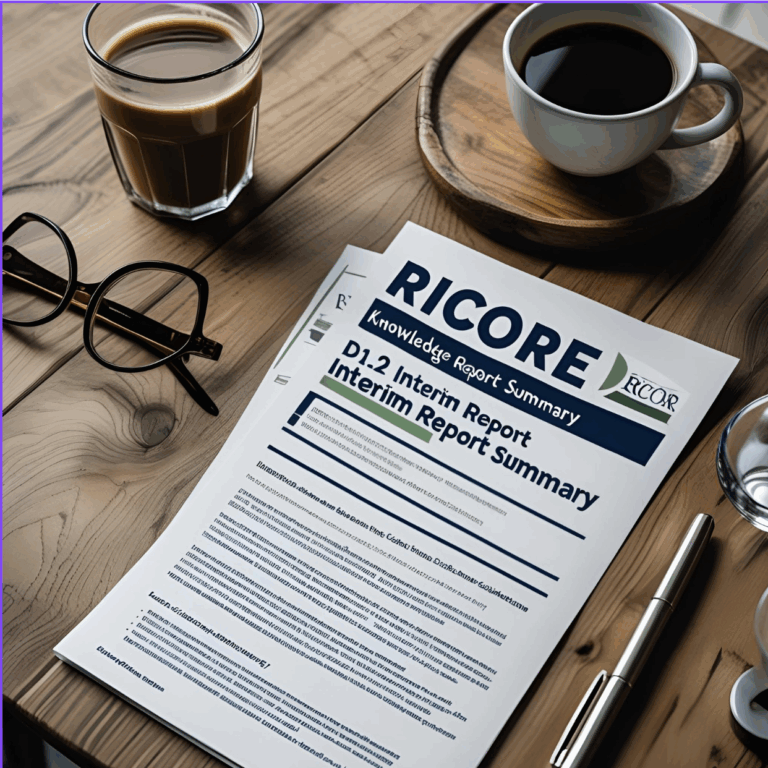This guide explains how offshore energy permitting works in the EU in 2025, what rules apply, and how risk-based and adaptive approaches are starting to reshape the landscape. Whether you’re a developer, researcher, or policymaker, this article outlines the steps, challenges, and reforms shaping offshore consenting today.

Why Permitting Matters
Before any offshore energy project can begin, developers must obtain various permits from national or regional authorities. These cover:
- Use of marine space (e.g. leases or concessions)
- Environmental approvals (e.g. Environmental Impact Assessments)
- Navigation, fisheries, and defense clearance
- Construction and operation licenses
The process ensures that projects meet environmental standards, minimize conflict with other marine users, and comply with national and EU laws.
Who Regulates Offshore Energy in the EU?
Each EU Member State controls its own maritime territory, so offshore permitting is handled nationally. However, many rules stem from EU directives, such as:
- Environmental Impact Assessment (EIA) Directive
- Strategic Environmental Assessment (SEA) Directive
- Habitats and Birds Directives (Natura 2000 sites)
- Marine Spatial Planning (MSP) Directive
- Water Framework and Marine Strategy Framework Directives
These EU laws ensure baseline environmental protection, but implementation and interpretation vary widely across countries. Some have streamlined systems. Others involve multiple agencies with overlapping responsibilities.
Typical Permitting Steps in 2025
While the exact process depends on the country and project, most offshore energy proposals follow a version of these steps:
- Site Identification: Developer selects a location, often aligned with marine spatial plans.
- Scoping & Pre-Application: Early consultation with regulators and stakeholders.
- Environmental Surveys: Baseline studies of wildlife, seabed, and marine use.
- EIA Submission: A formal environmental report is submitted.
- Public Consultation: Stakeholders and the public can comment.
- Permit Review: Authorities assess the project and its risks.
- Permit Decision: Consent is granted (with conditions) or refused.
- Post-Consent Monitoring: Ongoing studies after construction to assess impact.
In some countries, this entire process can take 3–7 years for large commercial projects. For smaller or demonstration projects, faster pathways are emerging.
What Changed Since 2020?
Several reforms have shaped offshore permitting in the last few years:
- EU Offshore Renewable Energy Strategy (2020): Set a target of 300 GW by 2050, pushing Member States to simplify consenting.
- Updated EIA Directives: Emphasize monitoring, cumulative effects, and stakeholder inclusion.
- More Strategic Planning: Countries like the Netherlands, Denmark, and Germany now pre-zone areas for offshore energy.
- Digital Portals: Some countries have moved toward one-stop-shop platforms for permitting.
Still, many nations struggle with complex processes, slow coordination, and public opposition in sensitive areas.
The Rise of Risk-Based Consenting
A major innovation in offshore permitting is the rise of risk-based consenting. Instead of applying the same rules to every project, authorities consider:
- Project scale – is this a full commercial farm or a small pilot?
- Technology familiarity – is the device well-studied or novel?
- Environmental sensitivity – is the area home to protected habitats?
Based on these factors, a project may face a lighter survey burden, shorter timelines, or more adaptive conditions. Scotland’s Survey, Deploy, Monitor (SDM) policy is one well-known example, allowing deployments with reduced pre-consent data in low-risk scenarios.
Best and Worst Performers
While all EU countries operate under the same environmental laws, performance varies:
- Leaders: Denmark, the Netherlands, and Germany have integrated planning, pre-zoned areas, and clearer timelines.
- Mid-performers: Ireland, Portugal, and France have improved but still face bottlenecks.
- Lagging states: Some Member States still lack clear procedures, creating high uncertainty for developers.
Cross-border collaboration is improving. Shared environmental data, regional planning (e.g., the North Sea), and EU funding are helping level the playing field.
Key Challenges in 2025
Despite progress, several challenges remain:
- Overlapping authorities: Multiple agencies with conflicting rules delay approvals.
- Limited capacity: Small regulators often lack staff to process complex projects.
- Public opposition: Projects near coasts or in sensitive zones can trigger protests.
- Lack of data: In some regions, baseline environmental information is outdated or missing.
These issues slow down investment and may push developers to seek faster permitting markets outside the EU.
How Developers Can Prepare
To improve their odds of successful permitting, developers should:
- Engage early with local regulators and communities
- Review national marine spatial plans
- Use existing environmental data where possible
- Design flexible projects that can adapt to feedback
- Apply risk-based arguments to reduce survey burden
Working with experienced consultants and legal advisors is also recommended, especially in less streamlined jurisdictions.
Looking Ahead
The EU aims to install over 100 GW of offshore wind and marine renewables by 2030. This is an ambitious goal, and it won’t happen without faster, more flexible permitting.
New tools like digital consent platforms, shared data repositories, and adaptive licensing models will play a major role. So will strong cooperation between governments, industry, and civil society.
For now, understanding how each Member State handles offshore energy permitting — and how to navigate those systems — remains essential for any successful project.


